The Heart of Screenland

Ray Bolger, Judy Garland and Jack Haley in a studio publicity still "The Wizard of Oz" 1939 MGM / The Hollywood Archive
The small city of Culver City CA, is where the Hollywood Archive makes it's home. Hundreds of movies have been produced on the lots of Culver City's studios: Sony Pictures Studios (originally MGM Studios), Culver Studios, and the former Hal Roach Studios. These include The Wizard of Oz, The Thin Man, Gone with the Wind, Rebecca, the Tarzan series, and the original King Kong. More recent films made in Culver City include Grease, Raging Bull, E.T. the Extra-Terrestrial, City Slickers, Air Force One, Wag the Dog and Contact. Television is no stranger to the City as well. Series made on Culver City sets have included Las Vegas, Gunsmoke, Cougar Town, Mad About You, Lassie, Hogan's Heroes, Batman, The Green Hornet, Arrested Development, The Andy Griffith Show, Gomer Pyle, Jeopardy!, The Nanny, Hell's Kitchen, MasterChef, the syndicated version of Wheel of Fortune and Tosh. O. In an interesting side note, the television series The Green Hornet featured martial arts Icon Bruce Lee as Kato, who made his home in Culver City during the series' production.
John Travolta's "Stranded at the Drive-In" sequence in Grease was filmed at the Studio Drive-In on the corner of Jefferson and Sepulveda. It served as a set for many other films, including Pee-wee's Big Adventure. The theatre was closed in 1993 and was demolished in 1998; it is now a housing subdivision featuring large homes on small lots, as well as being home to the Kayne-ERAS center, a school and community center for the disabled and mentally challenged.
Culver City's streets have been featured in many films and television series. Since much of the architecture has not changed in decades, particularly in residential areas of town, the nostalgic sitcom The Wonder Years set many of its outdoor scenes in the neighborhoods of Culver City. The 1970s/1980s series CHiPs also featured many chase scenes through the streets. The Nicolas Cage film Matchstick Men included scenes made at Veterans Memorial Park, which was also featured in the opening scenes of the sitcom The Hogan Family.
The Aviator, a film about Howard Hughes, featured several mentions of Culver City in connection with Hughes. Scenes from Bewitched (2005) with Nicole Kidman and Will Ferrell were also filmed in the Culver City streets. The film Fun with Dick and Jane (2005) starring Jim Carrey was filmed there. The closing aerial sequence of Get Shorty (1995) starring John Travolta and Danny DeVito is also filmed in Culver City, at Sony Pictures Studios. Additionally, scenes of Superbad (2007) starring Jonah Hill and Michael Cera were filmed in areas surrounding Culver City High School.
In 2010, the films Killers and Dinner for Schmucks were filmed in Culver City. In 2011, Lincoln Lawyer, Moneyball, Horrible Bosses and Jack and Jill were released, all of which were filmed in Culver City. Think Like a Man and The Campaign were filmed in Culver City and released in 2012
Culver City History:
Before the Spanish settled California, Native Americans traversed the fertile valleys surrounding their home in Yangna, today's downtown Los Angeles. They lived off the land's rich resources, harvesting materials for their baskets and huts, hunting small game, and spearing fish from their broadboats on the creek known now as La Ballona.
The early Spanish settlers called these indigenous people the Gabrielinos after the San Gabriel Mission, established in 1771. The Mission and surrounding land were protected by Spanish soldiers sent by King Carlos III of Spain. Many stayed on, married, raised families and started grazing cattle.
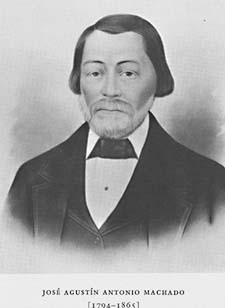 Agustìn Machado, a descendent of one of the Spanish soldiers, embarked on a dawn to dusk horseback ride in 1819 as the local method of staking claim to 14,000 acres of prime ranch land in the area and called it Rancho La Ballona. This land, owned by Agustìn, his brother Ygnacio and father and son Felipe and Tomas Talamantes, along with another ranch, Rancho Rincon de los Bueyes or “Cattle Corner,” owned by the Higuera and Lopez families, would become the area known today as Culver City.
Agustìn Machado, a descendent of one of the Spanish soldiers, embarked on a dawn to dusk horseback ride in 1819 as the local method of staking claim to 14,000 acres of prime ranch land in the area and called it Rancho La Ballona. This land, owned by Agustìn, his brother Ygnacio and father and son Felipe and Tomas Talamantes, along with another ranch, Rancho Rincon de los Bueyes or “Cattle Corner,” owned by the Higuera and Lopez families, would become the area known today as Culver City.
After California achieved statehood in 1850, the expansive Rancho La Ballona was subdivided and owned by or purchased from descendants of the original settling families. With the expansion came the founding of the La Ballona School in 1865, as well as a post office and storefronts. A new city was in the wings, just waiting to be born, and Harry Culver was just the person to do it.
The city founder, Harry Culver, moved to Southern California in 1910, worked for real estate developer I.N. Van Nuys, and scouted developable land in the Los Angeles area. In 1913, he announced his plan for a city that would ultimately bear his name and lie halfway between Los Angeles and Abbot Kinney's resort, Venice. Culver brought busloads of people to the new city for a free lunch to show them what it had to offer. He employed a large real estate sales force, ran ads that read "All Roads Lead to Culver City" and used Kleig lights to draw attention to his future city.
Culver, who was enamored with the burgeoning movie industry, thought it would be a strong economic base for his ideal of a balanced community. On the banks of La Ballona Creek, Harry Culver spotted noted filmmaker, Thomas Ince, making one of his famous westerns and successfully enticed Ince to move his studios to Culver City from “Inceville,” located near Sunset Boulevard and the Pacific Coast Highway. Ince/Triangle Studios were built in 1915, a formal Colonnade defining the entrance, which is still seen today on Washington Boulevard. The Ince/Triangle Studios were purchased by Samuel Goldwyn in 1918, then merged to become Metro-Goldwyn-Mayer (MGM) in 1924.
 By the time Culver City was incorporated in 1917, Culver had married actress Lillian Roberts, who was under contract to Ince, and immersed himself in the growth of his new city. In 1918, Harry Culver helped Ince acquire property for his second studio in 1918, the Thomas H. Ince Studios, currently The Culver Studios, also on Washington Boulevard. A year later, Hal Roach moved his studio from downtown Los Angeles to Culver City, becoming the new home for the “Laugh Factory to the World.” A number of small studios, such as the Willat Studios, were also located in town.
By the time Culver City was incorporated in 1917, Culver had married actress Lillian Roberts, who was under contract to Ince, and immersed himself in the growth of his new city. In 1918, Harry Culver helped Ince acquire property for his second studio in 1918, the Thomas H. Ince Studios, currently The Culver Studios, also on Washington Boulevard. A year later, Hal Roach moved his studio from downtown Los Angeles to Culver City, becoming the new home for the “Laugh Factory to the World.” A number of small studios, such as the Willat Studios, were also located in town.
By the 1920s, Culver City began to expand from its initial 1.2 square miles around Main Street, its first commercial district. In 1924 Culver built the six-story Hotel Hunt (now the Culver Hotel), viewed as a skyscraper at the time. Later it would become known as the temporary home of the "Munchkins" when The Wizard of Oz was filmed at MGM in the late 1930s. The wild tales and stories that emerged from this Munchkin “residence” inspired the 1981 Chevy Chase and Carrie Fisher movie, Under the Rainbow and, in 1997, six of the original cast returned for a Beyond the Rainbow event to share their remembrances with the Culver City Historical Society. 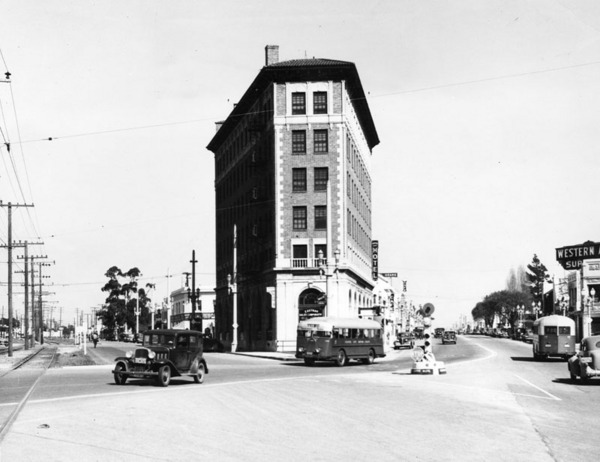
During the Prohibition era in the 1920s and ‘30s, a proliferation of nightclubs found their home in the city, where gambling was prevalent and liquor flowed freely. One of the most famous was Frank Sebastian’s Cotton Club, where local resident Louis Armstrong played along with other musical giants and gave Lionel Hampton his start. Because Culver City’s boundary lines were so irregular, they often cut through the middle of these buildings. Cash registers were equipped with wheels so that police raids could be thwarted by moving from Los Angeles’ to Culver City’s jurisdiction and vice versa.
Throughout the 1920’s, 30’s and 40’s, the film industry thrived in Culver City. MGM acquired five back lots, totaling more than 180 acres. Location filming was the norm, and locals were not surprised to see Stan Laurel dressed in kilts on Main Street for Putting Pants on Philip or Oliver Hardy hanging out of a City Hall window as they filmed County Hospital. Spanky and the Our Gang kids engaged in their antics with Pete the Pup on city streets. Locals also enjoyed participating as extras in movies like BEN HUR and THE LAST OF THE MOHICANS. In 1936 the official city seal was adapted to add the words, "Culver City, the Heart of Screenland." 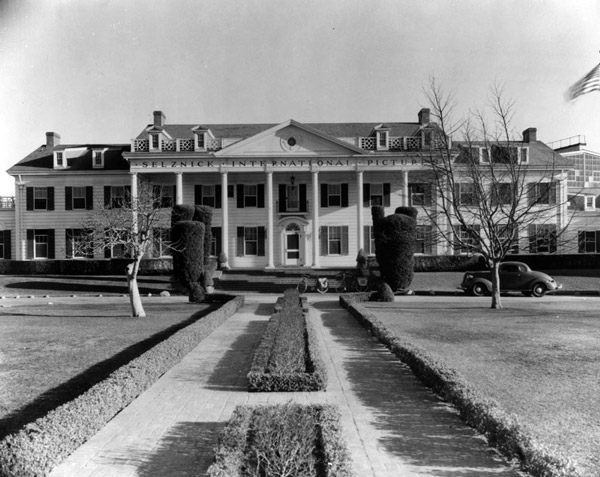
From 1924 through 1943, a moratorium was declared on annexations and development and Culver City’s growth slowed. Once WWII started, to support the war effort, Hal Roach made military training films at “Fort Roach.” Culver City became a charter city its 1947, with its own city administration, city council, school district and police and fire departments. When the moratorium was lifted, the Hayden Tract was developed to house industrial businesses. Today many buildings in the Tract have been renovated by visionary architects, such as Eric Owen Moss, and a growing creative media and technology sector has established itself in the area. From 1950 through the 1960's, Culver City again enjoyed growth in development and geographic size. The main boulevards were bustling with cars, new retail space and businesses were opening, and Helms Bakeries, established in the 1930's, were still sending out Helms coaches to sell their goods to local housewives.
In the 1970’s, despite MGM’s ownership divesting itself of its backlots, the City continued to expand largely due to the creation of the Culver City’s Redevelopment Agency (CCRA) established in 1971. The Fox Hills Mall (now Westfield Culver City after a renovation in 2009) was the first project undertaken by the CCRA. During its existence, the Culver City’s Redevelopment Agency (CCRA) and the City developed numerous commercial and affordable housing programs and projects that revitalized aging properties and spurred economic growth throughout the entire city.
Most recently, Culver City has experienced a renaissance. Strong and growing businesses in the city include information and media firms, retail, and professional services. The Helms building is the hub of the thriving Arts District with galleries, shops, and a retail center focusing on home furnishings. The opening of Metro’s Exposition rail line in 2012 has connected Culver City to numerous locations throughout the region and has triggered the ground-breaking of multiple transit-oriented, mixed use development adjacent to the Expo line station set to open within the next few years. The city’s downtown area continues to receive national recognition as a center for premiere dining and night spots, unique shops, and live theatre with the Actor’s Gang and the Center Theatre Group’s Kirk Douglas Theatre.
Historical photos Courtesy Culver City Historical Society
 English
English
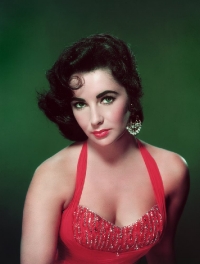
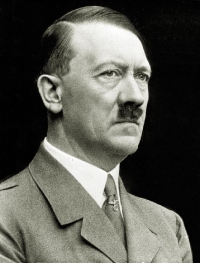

 Agustìn Machado, a descendent of one of the Spanish soldiers, embarked on a dawn to dusk horseback ride in 1819 as the local method of staking claim to 14,000 acres of prime ranch land in the area and called it Rancho La Ballona. This land, owned by Agustìn, his brother Ygnacio and father and son Felipe and Tomas Talamantes, along with another ranch, Rancho Rincon de los Bueyes or “Cattle Corner,” owned by the Higuera and Lopez families, would become the area known today as Culver City.
Agustìn Machado, a descendent of one of the Spanish soldiers, embarked on a dawn to dusk horseback ride in 1819 as the local method of staking claim to 14,000 acres of prime ranch land in the area and called it Rancho La Ballona. This land, owned by Agustìn, his brother Ygnacio and father and son Felipe and Tomas Talamantes, along with another ranch, Rancho Rincon de los Bueyes or “Cattle Corner,” owned by the Higuera and Lopez families, would become the area known today as Culver City. By the time Culver City was incorporated in 1917, Culver had married actress Lillian Roberts, who was under contract to Ince, and immersed himself in the growth of his new city. In 1918, Harry Culver helped Ince acquire property for his second studio in 1918, the Thomas H. Ince Studios, currently The Culver Studios, also on Washington Boulevard. A year later, Hal Roach moved his studio from downtown Los Angeles to Culver City, becoming the new home for the “Laugh Factory to the World.” A number of small studios, such as the Willat Studios, were also located in town.
By the time Culver City was incorporated in 1917, Culver had married actress Lillian Roberts, who was under contract to Ince, and immersed himself in the growth of his new city. In 1918, Harry Culver helped Ince acquire property for his second studio in 1918, the Thomas H. Ince Studios, currently The Culver Studios, also on Washington Boulevard. A year later, Hal Roach moved his studio from downtown Los Angeles to Culver City, becoming the new home for the “Laugh Factory to the World.” A number of small studios, such as the Willat Studios, were also located in town.
